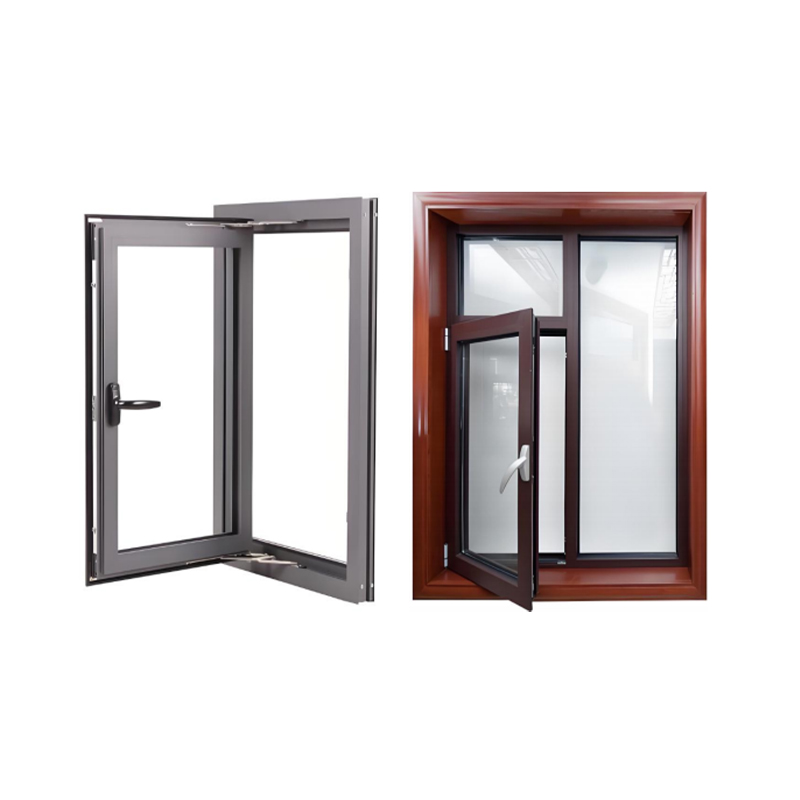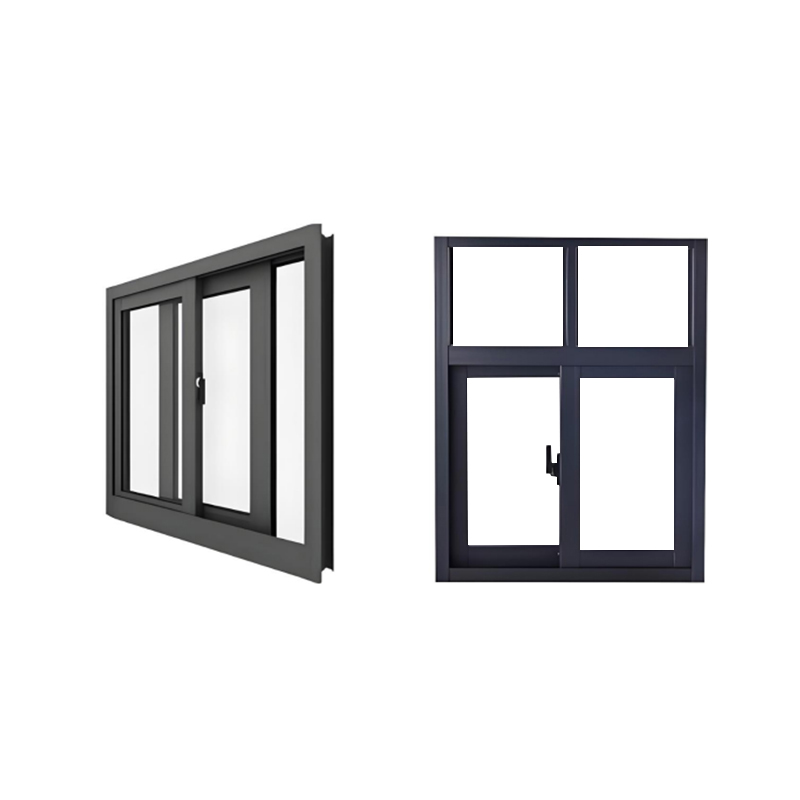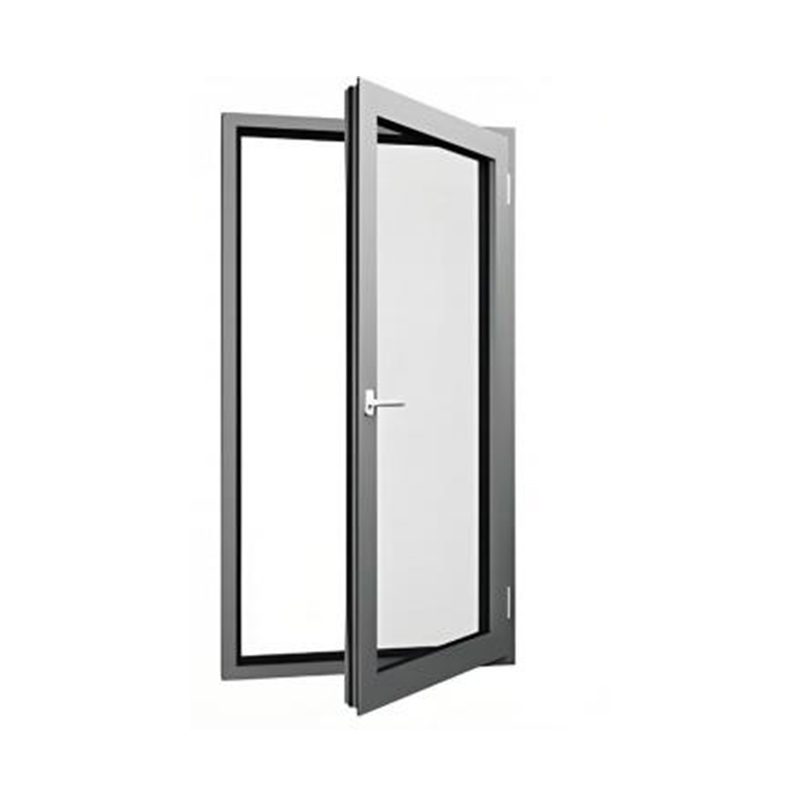How can sliding windows be used to optimize indoor temperature control?
Release Time : 2025-08-06
Using sliding windows to optimize indoor temperature control has become an integral part of modern architectural design. A well-designed sliding window system not only improves living comfort but also effectively reduces energy consumption, enabling a more environmentally friendly and economical lifestyle. Sliding windows, with their unique structural features and material selection, demonstrate exceptional ability to regulate indoor temperature.
First, the design of sliding windows allows users to flexibly adjust ventilation according to actual needs, thereby achieving the desired indoor temperature. In warmer months, opening sliding windows allows for fresh air to flow in, creating natural convection, helping to dissipate heat and maintain a cooler indoor environment. Compared to traditional fixed or sliding windows, sliding windows offer a larger opening area, allowing for smoother air circulation. Furthermore, users can fine-tune the angle and position of the window opening based on wind direction and personal preference to ensure optimal ventilation. This flexibility not only improves living comfort but also reduces reliance on air conditioning systems, saving energy costs.
Second, high-quality glass is a key factor in the ability of sliding windows to optimize indoor temperature. Modern sliding windows typically utilize double or even triple-layered insulating glass, with an inert gas filling the space between the panes to effectively block heat transfer. In summer, this design prevents high outdoor temperatures from entering the home, while in winter, it helps retain warmth and prevents heat loss. Some high-end products also feature a low-emissivity (Low-E) coating on the glass surface to further enhance thermal insulation. These advanced glass treatment technologies work together to create a relatively stable temperature control environment, maintaining a comfortable indoor temperature regardless of external climate fluctuations.
Furthermore, the sealing performance of sliding windows is crucial for optimizing indoor temperature. A good sealing design effectively prevents the exchange of hot and cold air, preventing unnecessary energy loss. High-quality sliding windows are equipped with high-strength rubber strips or other sealing materials to ensure they remain tightly closed even in strong winds. This not only enhances the window's thermal insulation but also improves soundproofing, creating a quiet and comfortable living space for residents. Furthermore, some intelligent sliding windows can automatically adjust the sealing level based on the temperature difference between indoor and outdoor, further improving temperature control efficiency.
Notably, sliding windows also offer advantages in temperature control, thanks to their design details. For example, some models feature sunshades or blinds, which block direct sunlight without completely closing the windows, reducing heat input. This approach preserves the benefits of natural light while avoiding overheating caused by excessive sunlight. Furthermore, some sliding windows incorporate motorized control systems, allowing users to easily open and close the windows via a remote control or mobile app, adjusting ventilation levels to suit changing indoor and outdoor conditions. This intelligent management not only enhances convenience but also enables precise temperature control.
In practical applications, sliding windows have demonstrated their adaptability to diverse climates. From hot and dry deserts to cold and humid coastal cities, sliding windows offer a solution. In tropical regions, large sliding windows combined with high-efficiency insulated glass can help cool building interiors while utilizing natural ventilation to reduce humidity and improve air quality. In colder regions, effective insulation effectively shields against wind chill, maintaining warmth. By properly configuring the number, size, and placement of sliding windows, designers can develop the most appropriate temperature control strategy for a specific location and climate, maximizing the benefits of sliding windows.
In addition, the location and layout of sliding windows also influence their thermal control effectiveness. A sound layout allows sliding windows to coordinate with other architectural elements, creating effective airflow paths. For example, in a north-south facing house, larger sliding windows on the south side can maximize winter sunlight, while smaller windows on the north side can reduce heat loss. Shading can be installed on the east and west sides to prevent indoor temperatures from rising during the summer afternoon sun. This holistic planning, which considers factors such as orientation and daylight hours, helps achieve more balanced and efficient indoor temperature control.
Finally, with the development of smart home technology, future sliding windows will incorporate more intelligent features, further enhancing thermal control. For example, smart sliding windows integrated with temperature sensors and weather station information can automatically adjust their opening and closing based on real-time weather conditions, ensuring a consistently ideal indoor temperature. Furthermore, when integrated with home energy management systems, sliding windows can coordinate with air conditioning, heating, and other devices to achieve comprehensive energy-saving management. This intelligent temperature control approach not only improves living comfort but also strongly supports sustainable lifestyles.
In summary, sliding windows effectively optimize indoor temperature control through a variety of means, including flexible ventilation design, high-quality glass materials, excellent sealing performance, and intelligent management. Each improvement is designed to provide a better user experience and demonstrates a deep understanding and respect for user needs and social responsibility. In the future, with the continuous emergence of new materials and technologies, sliding windows will demonstrate their unique value in even more areas, driving the entire industry to higher levels. Both emerging and established industries can benefit from this, jointly creating more efficient, reliable, and environmentally friendly building solutions.
First, the design of sliding windows allows users to flexibly adjust ventilation according to actual needs, thereby achieving the desired indoor temperature. In warmer months, opening sliding windows allows for fresh air to flow in, creating natural convection, helping to dissipate heat and maintain a cooler indoor environment. Compared to traditional fixed or sliding windows, sliding windows offer a larger opening area, allowing for smoother air circulation. Furthermore, users can fine-tune the angle and position of the window opening based on wind direction and personal preference to ensure optimal ventilation. This flexibility not only improves living comfort but also reduces reliance on air conditioning systems, saving energy costs.
Second, high-quality glass is a key factor in the ability of sliding windows to optimize indoor temperature. Modern sliding windows typically utilize double or even triple-layered insulating glass, with an inert gas filling the space between the panes to effectively block heat transfer. In summer, this design prevents high outdoor temperatures from entering the home, while in winter, it helps retain warmth and prevents heat loss. Some high-end products also feature a low-emissivity (Low-E) coating on the glass surface to further enhance thermal insulation. These advanced glass treatment technologies work together to create a relatively stable temperature control environment, maintaining a comfortable indoor temperature regardless of external climate fluctuations.
Furthermore, the sealing performance of sliding windows is crucial for optimizing indoor temperature. A good sealing design effectively prevents the exchange of hot and cold air, preventing unnecessary energy loss. High-quality sliding windows are equipped with high-strength rubber strips or other sealing materials to ensure they remain tightly closed even in strong winds. This not only enhances the window's thermal insulation but also improves soundproofing, creating a quiet and comfortable living space for residents. Furthermore, some intelligent sliding windows can automatically adjust the sealing level based on the temperature difference between indoor and outdoor, further improving temperature control efficiency.
Notably, sliding windows also offer advantages in temperature control, thanks to their design details. For example, some models feature sunshades or blinds, which block direct sunlight without completely closing the windows, reducing heat input. This approach preserves the benefits of natural light while avoiding overheating caused by excessive sunlight. Furthermore, some sliding windows incorporate motorized control systems, allowing users to easily open and close the windows via a remote control or mobile app, adjusting ventilation levels to suit changing indoor and outdoor conditions. This intelligent management not only enhances convenience but also enables precise temperature control.
In practical applications, sliding windows have demonstrated their adaptability to diverse climates. From hot and dry deserts to cold and humid coastal cities, sliding windows offer a solution. In tropical regions, large sliding windows combined with high-efficiency insulated glass can help cool building interiors while utilizing natural ventilation to reduce humidity and improve air quality. In colder regions, effective insulation effectively shields against wind chill, maintaining warmth. By properly configuring the number, size, and placement of sliding windows, designers can develop the most appropriate temperature control strategy for a specific location and climate, maximizing the benefits of sliding windows.
In addition, the location and layout of sliding windows also influence their thermal control effectiveness. A sound layout allows sliding windows to coordinate with other architectural elements, creating effective airflow paths. For example, in a north-south facing house, larger sliding windows on the south side can maximize winter sunlight, while smaller windows on the north side can reduce heat loss. Shading can be installed on the east and west sides to prevent indoor temperatures from rising during the summer afternoon sun. This holistic planning, which considers factors such as orientation and daylight hours, helps achieve more balanced and efficient indoor temperature control.
Finally, with the development of smart home technology, future sliding windows will incorporate more intelligent features, further enhancing thermal control. For example, smart sliding windows integrated with temperature sensors and weather station information can automatically adjust their opening and closing based on real-time weather conditions, ensuring a consistently ideal indoor temperature. Furthermore, when integrated with home energy management systems, sliding windows can coordinate with air conditioning, heating, and other devices to achieve comprehensive energy-saving management. This intelligent temperature control approach not only improves living comfort but also strongly supports sustainable lifestyles.
In summary, sliding windows effectively optimize indoor temperature control through a variety of means, including flexible ventilation design, high-quality glass materials, excellent sealing performance, and intelligent management. Each improvement is designed to provide a better user experience and demonstrates a deep understanding and respect for user needs and social responsibility. In the future, with the continuous emergence of new materials and technologies, sliding windows will demonstrate their unique value in even more areas, driving the entire industry to higher levels. Both emerging and established industries can benefit from this, jointly creating more efficient, reliable, and environmentally friendly building solutions.







